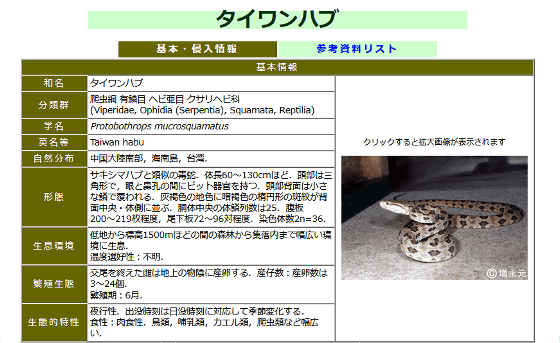The existence of a gene that has the potential to make humans acquire 'poisonous fangs' is revealed

An ancient, conserved gene regulatory network led to the rise of oral venom systems | PNAS
https://www.pnas.org/content/118/14/e2021311118

It is clear that mice can be poisonous like snakes | Okinawa Institute of Science and Technology Graduate University OIST
According to OIST, many studies have been conducted on the 'oral system' that injects poison by chewing, which is one of the means by which animals get rid of the poison, but previous studies have 'produced proteins that make up the poison.' It is said that 'genes for' were attracting attention. 'Many of the toxins in the toxins we see today were built in after the system of poisoning the mouth was already established,' said Agneish Balua, the lead author of the newly published treatise. We needed to look at the genes that existed before the origin of the venom, the genes that allowed the emergence of the toxic system, 'said the study. It emphasizes that it focused on 'a system that produces poison' instead of '.
The research team analyzed genes related to the venom glands of the snake 'Taiwan Hub ' of the pit viper family, which inhabits a lot in Okinawa, in order to identify genes related to the system that produces poison. As a result, we succeeded in identifying about 3000 genes used in a mechanism called ' endoplasmic reticulum stress response ' that protects cells from stress caused by protein production.

In addition, when the genomes of mammals such as humans, chimpanzees, mice, and dogs were analyzed, a gene with a function similar to that found at Taiwan Hub was discovered. Furthermore, examination of the salivary gland tissue of mammals revealed that the discovered gene showed an activation pattern similar to that of the venom glands of Taiwan Hub.

From the above findings, the research team found that mammalian salivary glands and snake venom glands have a functional intersection, even today, hundreds of millions of years after the division of mammalian and reptile strains. I'm guessing that they continue to have something in common. 'The results of this study are really solid evidence for the first time to support the theory that the venom glands evolved from the early salivary glands,' Barua said.
According to Mr. Barua, research results were reported in the 1980s that 'when a male mouse injects a compound produced in saliva into a rat, it exhibits strong toxicity.' From the results of the study and this study, Barua said, 'Under certain ecological conditions, if mice that produce more toxic proteins in saliva are more successful in reproduction, thousands of years later. May emerge poisonous mice, 'predicts the emergence of mice capable of producing poison.
In addition, because humans have genes related to the poison production system, Mr. Barua told OIST that 'the meaning of the word'poisonous person'will definitely change significantly.' That is.
Related Posts:







